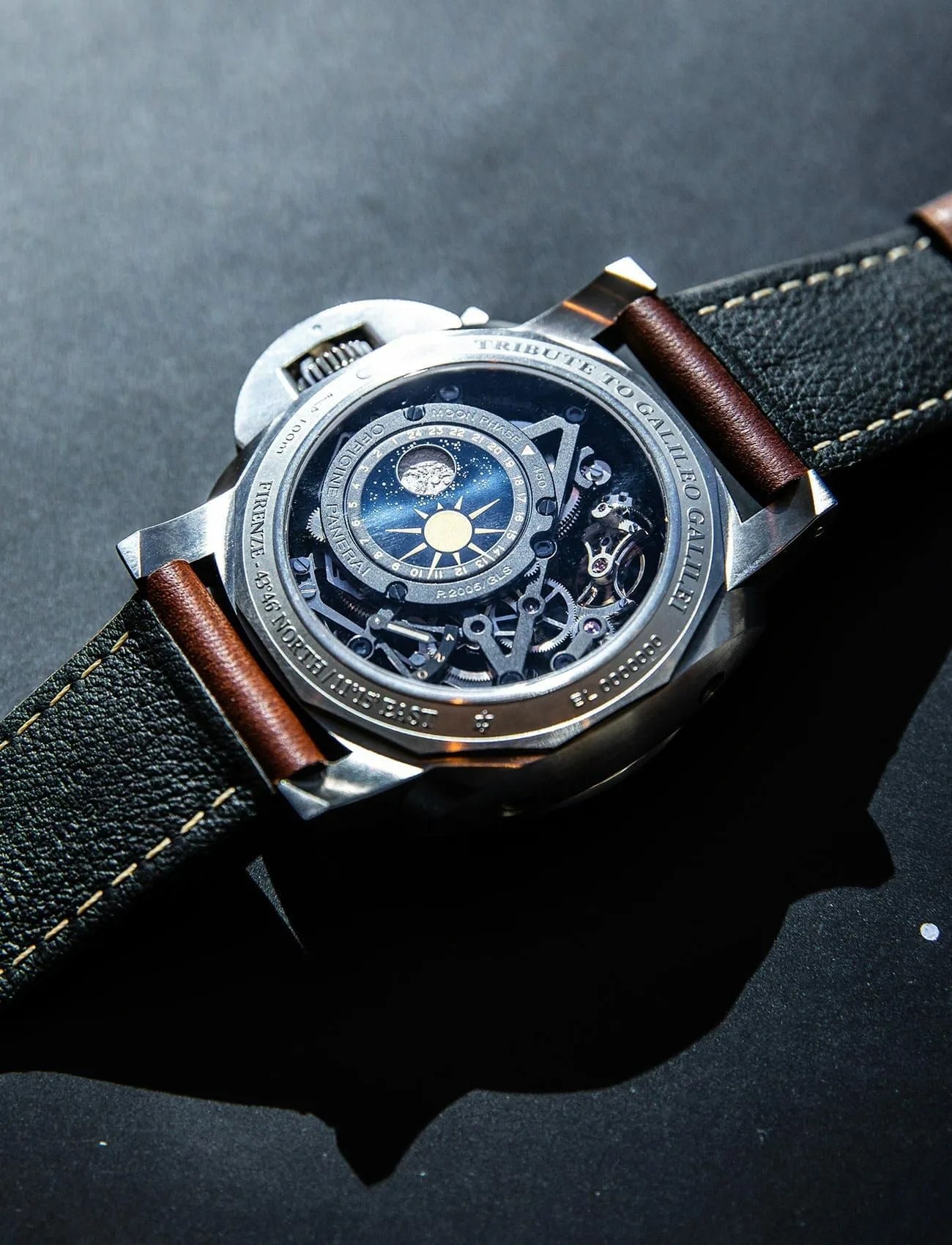While Panerai, the watchmaker that originally designed timepieces and instruments exclusively for the Italian navy, could conceivably rest on its laurels and make small tweaks to the Luminor and Radiomir collections until the end of Time itself, the now Swiss-owned Maison has decided to advance boldly into the realm of haute horlogerie and manufacture some truly remarkable, complicated pieces. We traveled to Aspen, Colorado to visit the Panerai boutique and learn about the newest complicated piece that the brand has to offer.
The L’Astronomo Luminor 1950 Tourbillon Moon Phases Equation of Time GMT — while it’s quite a mouthful, amazingly this long, descriptive model name doesn’t actually cover all of the functionality of the watch in question. The L’Astronomo, for short (though, to be clear, a first L’Astronomo debuted in 2010) is an incredible offering from Officine Panerai that is semi-customizable to the home location of the buyer (more on that, later) and packs a dizzying array of functions into something that is actually made to be worn on your wrist.
Inspired in part by the Florentine astronomer, physicist and engineer Galileo Galilei and employing the Luminor 1950 case shape, the L’Astronomo is the first Panerai model to include a moon phase indicator, but this is really just the tip of the horological iceberg. While the first L’Astronomo from 2010 included a tourbillon, calendar, equation of time indicator, and a sunup/sundown display, the new P.2005/GLS (for Galileo Luna Skeletrato) adds a GMT function as well as a moon phase indicator and an original system for indicating the date using polarized crystals. The movement itself utilizes 451 components, and the tourbillon rotates twice per minute.
Not content to employ a conventional moon phase indicator, the moon phase display on the L’Astronomo uses a unique system: a day/night indicator also displays the phases of the moon using two superimposed discs that rotate together in concert. The upper disc displays the 24 hours of the day and is read against a small internal disc fixed onto the movement — it also shows the sun during the hours of daylight and the stars of the sky at night. Within the night sky is a window through which a secondary disc with the moon is visible, which rotates and displays the appropriate moon phase according to a location specified by the watch’s owner.
Yup, you heard that right — this is some old school, Graves Vs. Packard, grande complication-type stuff. The buyer of a L’Astronomo gives Panerai his home location (or another location of his or her choosing), and the company then builds the watch movement (which takes one year) such that the moon phase indicator and sunrise/sunset indicators are always accurate relative to these particular coordinates (i.e. if you had specified New York City as your home location, then the moon phase displayed would always be that of the moon above NYC). Once you specify a location to Panerai, that’s it — there’s no going back and deciding that you’d like a moon phase indication of, say, Abu Dhabi instead, as the cams utilized in the sunrise/sunset indicator have to be specially created for each watch.
You also get an equation of time indicator, which is possibly the least useful complication known to modern man, but one of the most fascinating. An equation of time indicates the difference between the actual (solar) time and the conventional time each day (here using a plus/minus scale of 15 minutes, which changes according to the time of year). One potential use is to blame the equation of time indicator when you’re late for something, insisting that your personal schedule runs according to mean solar time.
Panerai could’ve given the L’Astronomo a conventional date indicator, but that would’ve been boring. Given that the company wants you to be able to admire the tourbillon escapement within the movement, they’ve constructed a special skeletonize movement that doesn’t require an actual dial. All of the pertinent time and calendar info (including a month indicator) is visible on the flange of this skeletonized movement, and the three spring barrels, which store four days’ worth of power, are visible on the back, along with a power reserve indicator.










